- Category
- War in Ukraine
An Axis of Evil, Russia and Iran’s Strengthened Alliance. What Does This Mean for Ukraine and the Wider World?
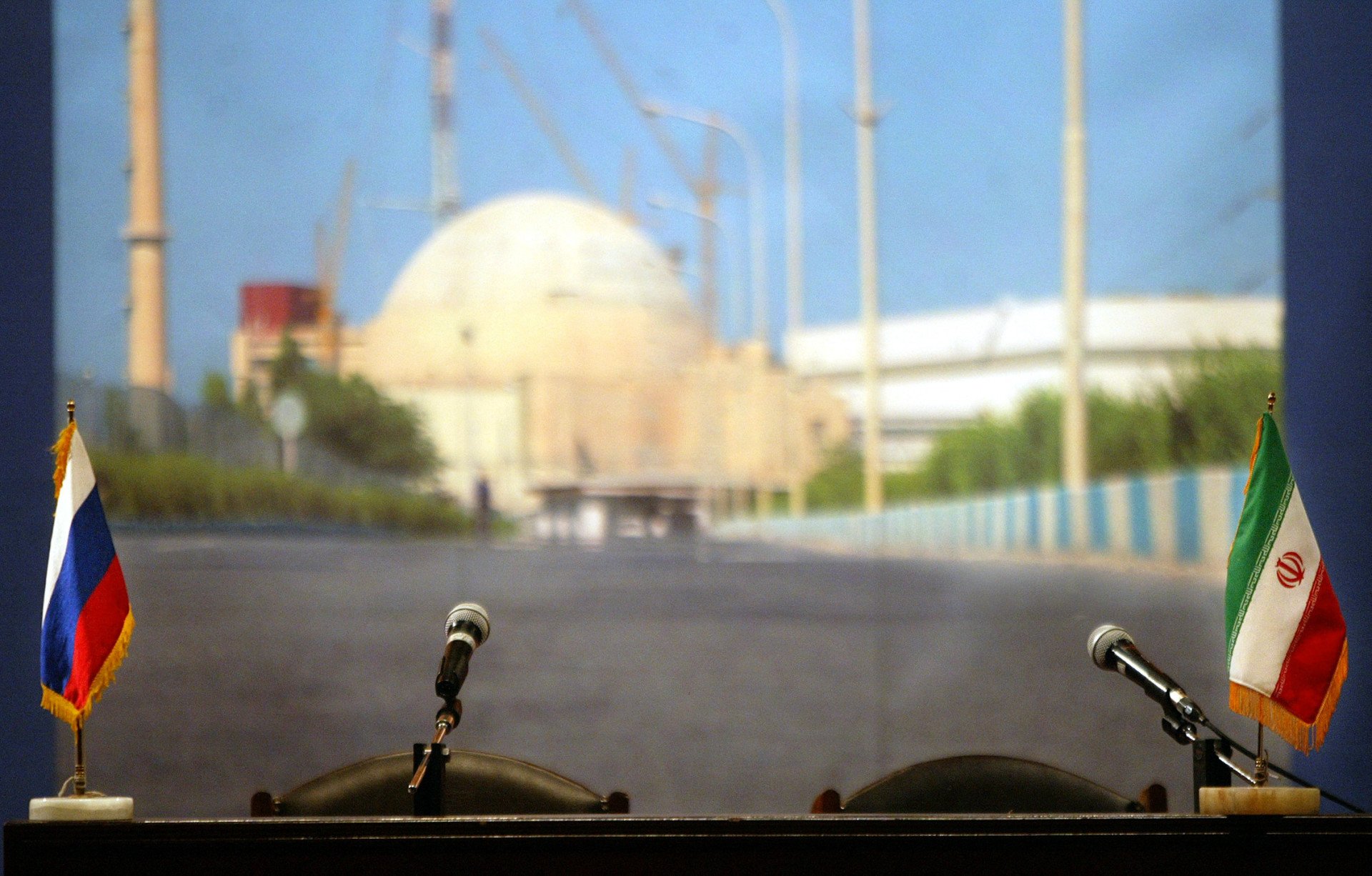
Russia and Iran are strengthening their relationship, seeking to disrupt the ‘global order’ by heightening global instability. What is the current status of their relationship, why are they uniting and what does this mean for Ukraine and the wider world?
Russia, Iran and North Korea are undoubtedly increasing their alliance in what some call the new “axis of evil”, a term coined by the then U.S. President George W. Bush in the months after the 9/11 attacks. Their recent growing ties have also been referred to as an “axis of disorder” and an “axis of authoritarians”, with researchers concerned that the world is entering a new age of global disorder “overturning rules, principles and institutions that underlie the prevailing international system.”
This group of global allies are “a serious, long-term threat to European countries”, Finland’s Defence Minister Antti Hakkanen said, further stating that their cooperation is “a weather system of security policy that is unfortunately troublesome”.
The U.S. and Europe have foreign policy tools, such as sanctions, to confront countries like North Korea, Russia and Iran. Their growing alliance attempts to dilute policy efficiency and “undermine global order” by overturning the balance of power in their own regions, making them less susceptible to, for example, sanctions.
Researchers claim Russia to be the key instigator, with the full-scale war in Ukraine cementing their goal of undermining NATO and the West, to which all countries within this new ‘axis’ share hostilities. This is a powerful crux for their partnerships.
North Korea began sending weapons and artillery to Russia in a food-for-artillery exchange and recently, Vladimir Putin and North Korean dictator Kim Jong Un signed a ‘strategic partnership agreement’ together. This sparked concern amongst politicians worldwide. Senators from the US Congress introduced a bill calling to officially designate Russia as “a state sponsor of terrorism”.
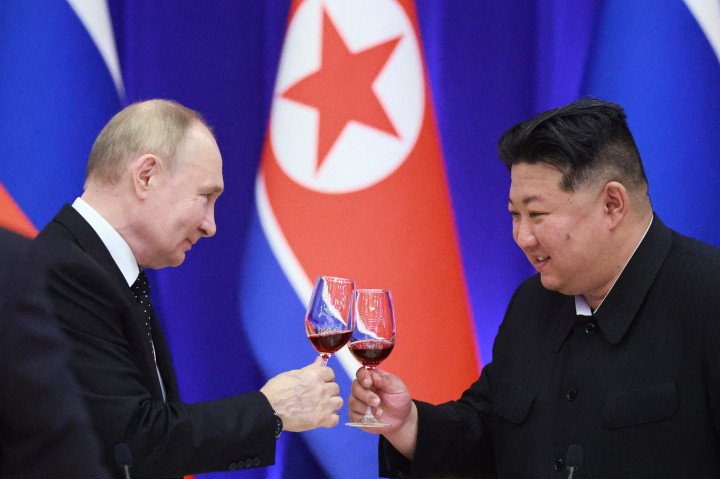
Iran has been on the ‘terrorism list’ since 1984, North Korea was briefly removed from the list between 2008-17 to encourage compliance in its nuclear weapons programme.
Iran is also a nuclear armed state. Ongoing pressure from the U.S. in military support and supplies to Ukraine is a problem for Russia. With an increase of threat in the Middle East, researchers say, the U.S may need to pull away some of its military resources from confronting Russia, a benefit for them.
Research shows that historically there are less conflicts during periods in which there is “one dominant order”. Their strengthening relationships are diluting the system that the U.S. and Europe has in place, likely heightening global instability—giving opportunities for smaller but significant conflicts to arise.
Their trade corridor:
Iran is one of the most economically isolated countries in the world. Moscow, after the full-scale invasion of Ukraine began, had extensive sanctions placed on them. International sanctions make it difficult for both countries to conduct international trade and access global markets. In order to by-pass sanctions they seek to expand economic ties with countries in Western and Central Asia.
The Rasht-Astara railway is being built, which is seen as an important link for Iran and Russia’s trade corridor, connecting India, Iran, Russia, Azerbaijan and other countries via railways and sea. According to sources, the Russian Federation will be investing 1.6 billion euros in this railway route, while an Iranian contractor is overseeing its construction.
“The unique North-South transport artery, of which the Rasht-Astara railway will become a part, will help to significantly diversify global traffic flows,” Putin said in a report published by TASS, Russia’s state news agency.
He also said the 162 km (100 mile) railway along the Caspian Sea coast would help to connect Russian ports on the Baltic Sea with Iranian ports in the Indian Ocean and the Gulf.
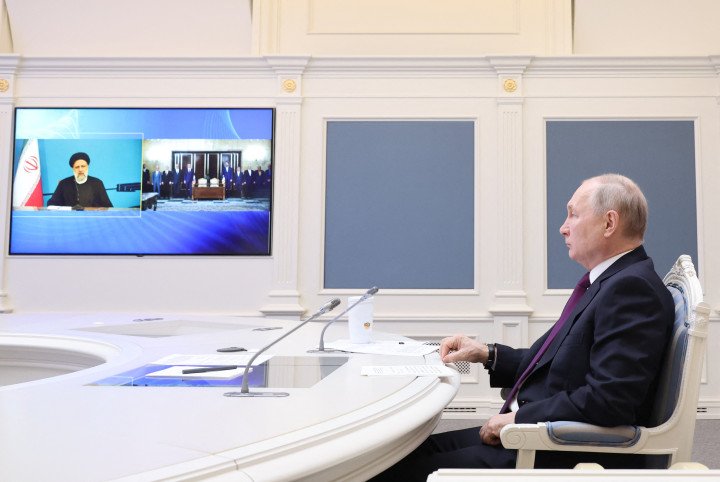
“Without a doubt, this agreement is an important and strategic step in the direction of cooperation between Tehran and Moscow,” Ebrahim Raisi, Iran’s previous President said while overseeing the signing of the deal with Putin in May 2023. Raisi has since died after his helicopter went down in an east Azerbaijan province in May 2024.
Putin traveled to Iran at the beginning of August 2024 to meet newly elected President Masoud Pezeshkian where he emphasized the necessity “to speed up the build of the North-South Corridor—a 7,200-kilometer multi-mode transport network connecting a range of countries, including Russia and Iran.”
On 22nd October, Konstantin Simonov, head of the National Energy Security Center in Moscow, stated on Russian national television that “Iran will remain under sanctions and these sanctions will worsen. To be honest, this is good news for Russia,” because Russia and Iran have signed a $6.5 billion gas and oil deal to develop Iran’s gas and oil fields.
Military partnerships and its impact on Ukraine:
Last week, on August 9th, Reuters reported that two European Intelligence sources told their reporters that Iran intends on delivering hundreds satellite-guided weapons to Russia for its war in Ukraine. They say, according to Reuters, that dozens of Russian military personnel are currently in Iran being trained to use the Fath-300 short-range ballistic missile system. A statement which Iran’s UN representative denies.
Further citing that they believe that Russian defense ministry representatives signed an agreement including the Fath-300 and another system called the Ababil, on December 13, 2023.
The Fath-360 defense system, travels at a maximum distance of 120 km (75 miles) and has a warhead of 150 kg according to sources. “The supply of Fath-360s could allow Russia to use more of its arsenal for targets beyond the front line in Ukraine, while employing Iranian warheads for closer-range targets” a military expert said.
Ababil missiles were brought to Moscow for the Army-2023 exhibition and were mentioned as possibly being on the transfer list by National Security Council Coordinator John Kirby during a briefing in November, 2023. Ababil is much smaller than the Fath-360, weighing at 240 kg with a maximum range of up to 86 km.
Sources did not specify the delivery of either missiles but said that training their military on using the system is the final step before delivery.
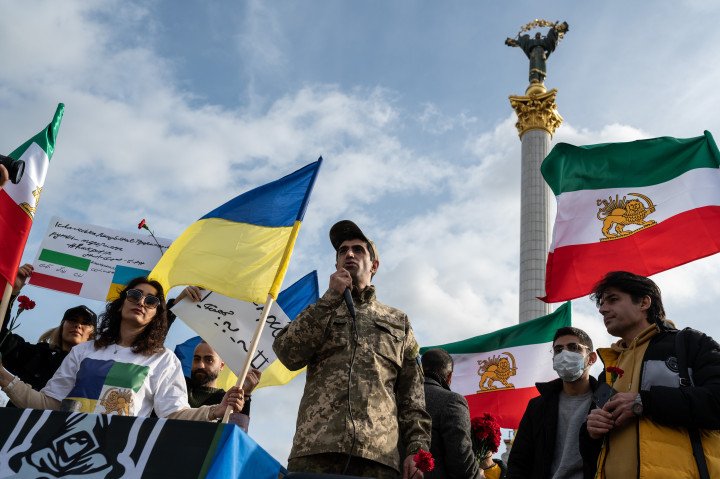
A spokesperson for the US National Security Council told Reuters that US and its NATO allies and G7 partners “are prepared to deliver a swift and severe response if Iran were to move forward with such transfers.”
It “would represent a dramatic escalation in Iran’s support for Russia’s war of aggression against Ukraine,” the spokesman said. “The White House has repeatedly warned of the deepening security partnership between Russia and Iran since the outset of Russia’s full-scale invasion of Ukraine.”
In October 2023, Iran’s restrictions on the export of some missiles, drones and other technologies, placed by the U.N. Security Council, expired. However, sanctions on their ballistic missile programme placed by the United States and European Union were retained due to concerns over its exports to the Middle East and to Russia.
The restrictions that the UN Security Council had placed hadn’t, however, curbed Iran from supplying Russia with a variety of weapons. Since September 2022, just a few months after the full-scale invasion began, Russia began attacking Ukraine with the Iranian Shahed-136 drones. Since then, the alliance between Tehran and Moscow has only strengthened.
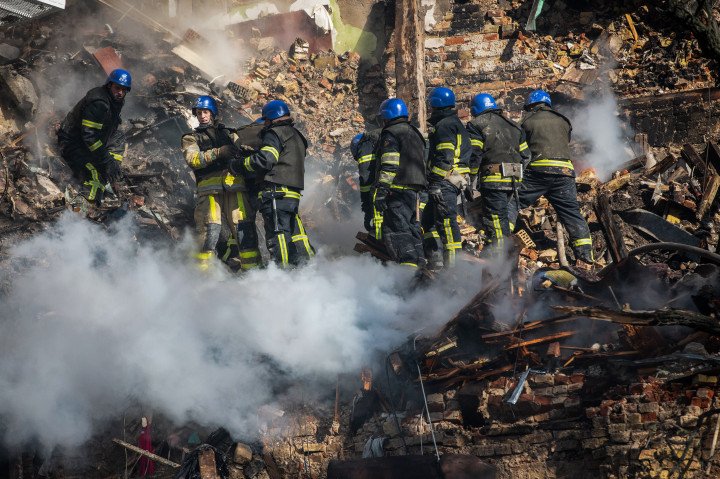
In November 2023, NATO allies expressed concern about Tehran’s “malicious activities”. “We call upon Iran to cease its military support to Russia, in particular its transfer of Uncrewed Aerial Vehicles (UAVs) which have been used to attack critical infrastructure, causing widespread civilian casualties” they said at a summit in Lithuania.
Only a few months later, Secretary of the Russian Security Council Nikolai Patrushev announced that “relations between Russia and Iran continue to strengthen, reaching a qualitatively new level across the whole range of areas.”
Further stating that they’re monitoring the development of a new bilateral and comprehensive long-term treaty with Iran and their “work on it is almost complete”.
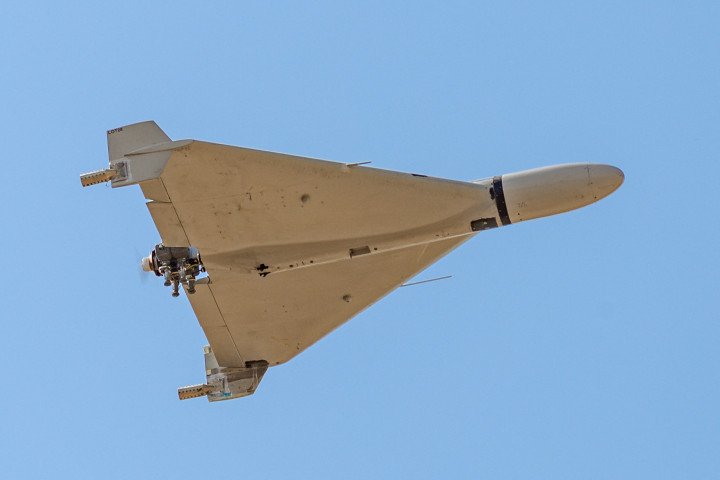
The Iranian-made Shahid-136 drones have attacked Ukrainian cities, often far from the frontline, en masse, since September 2022. They are often launched in large numbers in an attempt to overwhelm air defense, though Ukrainian air defense has proven to be fairly successful in downing these loitering munitions.
Ukrainian air defense forces have shot down around 3000 of the 3,800 Iranian Shahed kamikaze drones launched by Russia, Ukrainian Air Force spokesperson Yuriy Ihnat said in December 2023. There have since been more shaheds sent by Russia to attack Ukraine.
On the night of June 7th 2024, the engine of an Iranian Shahed 136 drone fell from the sky and crashed into a car in Dnipro.
During the Russian air raid last night a Shahed 136 drone engine plummeted from the sky and crashed into a car in Dnipro, Ukraine. A stock photo of a Shahed 136 engine is shown for reference. pic.twitter.com/ote6g2vZ42
— OSINT Aggregator (@AggregateOsint) July 7, 2024
Iran initially denied supplying drones to Russia. Later Iranian Foreign Minister Hossein Amirabdollahian said that they had provided a “small number” of drones to Moscow but delivered them before the full-scale war in February 2022 began. Zelenskyy responded accusing Tehran of lying as Ukraine was downing at least 10 a day.
“Those who accuse Iran of providing weapons to one of the sides in the Ukraine war are doing so for political purposes,” Iranian Foreign Ministry Spokesperson Nasser Kanaani said. “We have not given any drones to take part in that war.”
“All your data has been leaked online for the world to see. They will see you with the blood of thousands of innocent civilian Ukrainian people dripping from your hands,” Anonymous the hacker group wrote in an email to people working with Sahara Thunder, a company facilitating the illegal sale of weapons from Iran to Russia.
PRANA Network, another hacker group, uncovered nearly 10GB of files including “contracts of multi million dollar deals, payments with gold bars, plans for UAVs, details of agents in UAE, bank account details, factory layouts and more.” Index
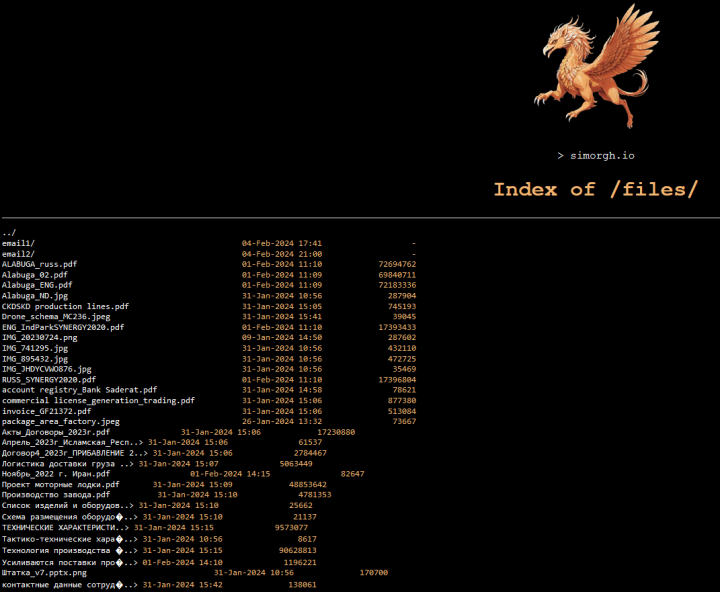
One of the leaked documents showed that Russia took Iranian delegates on a ‘VIP shopping tour’ around one of their U.S sanctioned weapons factories, for supporting the war in Ukraine, in the city of Yekaterinburg. Amongst its arsenal are mobile launchers and other components for anti aircraft batteries including Russia’s S-400, capable of downing Israeli fighter jets.
In January 2024, it was reported that an Iranian jet loitering munition was shot down from Ukrainian skies. The debris found, analysts claim, visually resembles the Iranian Shahed-238 loitering munition. Though little is known about the Shahed-238 with no visual representation to compare the debris with.
In February 2024, six sources told Reuters that Iran had supplied Russia with ‘around 400 missiles includes many from the Fateh-110 family of short-range ballistic weapons, such as the ‘Zolfaghar’, capable of striking targets at a distance of between 300 and 700 km (186 and 435 miles). One Iranian official anonymously told reporters that there had been “at least four shipments of missiles.’’
“There will be more shipments,” the second Iranian official said. “There is no reason to hide it. We are allowed to export weapons to any country that we wish to.”
Why does Iran need Russia?
Secretary of Russia’s Security Council and former Defense Minister Sergei Shoigu visited Tehran last week to, as he stated,“strengthen bilateral relations.”
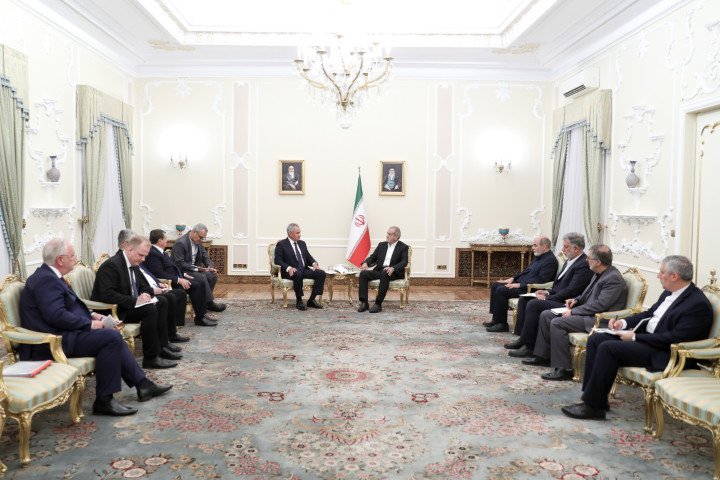
This meeting took place on July 30th 2024, the eve of a new escalation between Iran and Israel. Iran-backed Hezbollah’s top commander Fu’ad Shukr and four civilians were killed in an Israeli attack in Beirut Lebanon on July 30th 2024. The next morning, Hamas leader Ismail Haniyeh was assassinated in Tehran. Iran backs Hamas which has launched attacks against Israel, they also fund, train and arm Hezbollah.
In April 2024, several deadly attacks were conducted by Israel, Iran and their regional proxies and tensions grew. The U.S and European leaders issued a joint statement last week urging for a cease fire. Both states have fairly large military capabilities but according to analysts, ‘neither side possesses adequate military capabilities to fight a sustained and direct conflict with the other’. Russia’s reciprocal transfer of weapons to Iran however could strengthen its position, and in turn, strengthen Russia’s position in waging war against Ukraine.
Iran and Russia have been proven to strengthen their partnership and increase military trade to attack both Ukraine and Israel. The North-South corridor would likely allow them to trade more freely and evade sanctions, improving both their military capabilities and economic hardship. Russia’s war in Ukraine is an important aspect to overcoming the threats this alliance poses to the West. The threat of full-scale war between Iran and Israel, along with Russia’s invasion of Ukraine are linked which researchers say, should not be ignored.
-46f6afa2f66d31ff3df8ea1a8f5524ec.jpg)
-6359eca46c72bde40a90abaaadd6eaa8.png)
-29a1a43aba23f9bb779a1ac8b98d2121.jpeg)


-206008aed5f329e86c52788e3e423f23.jpg)
